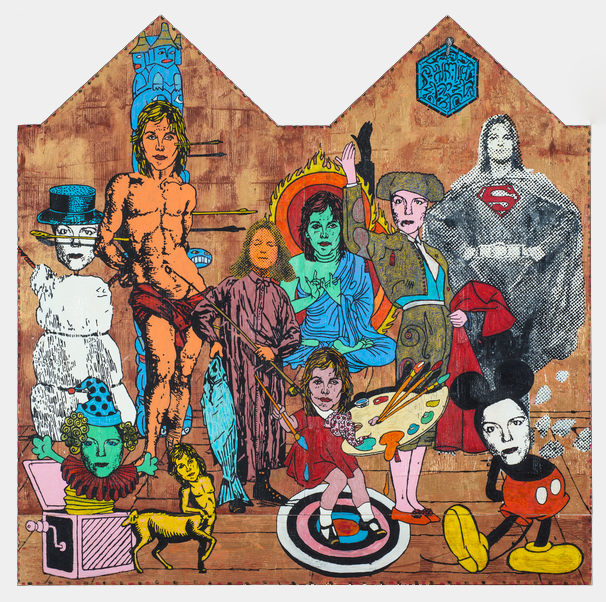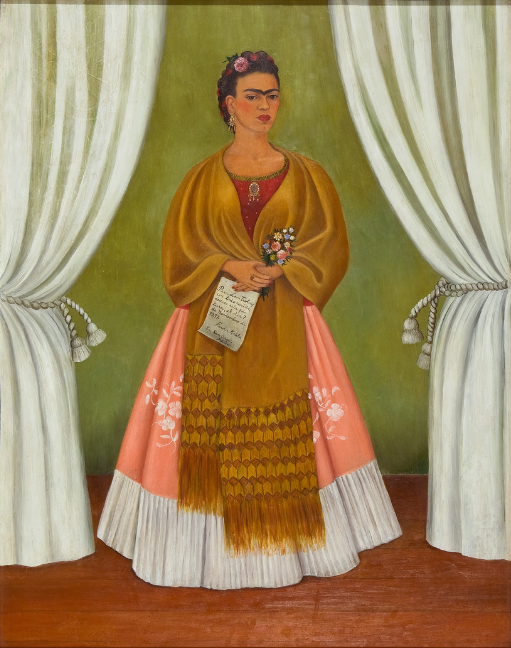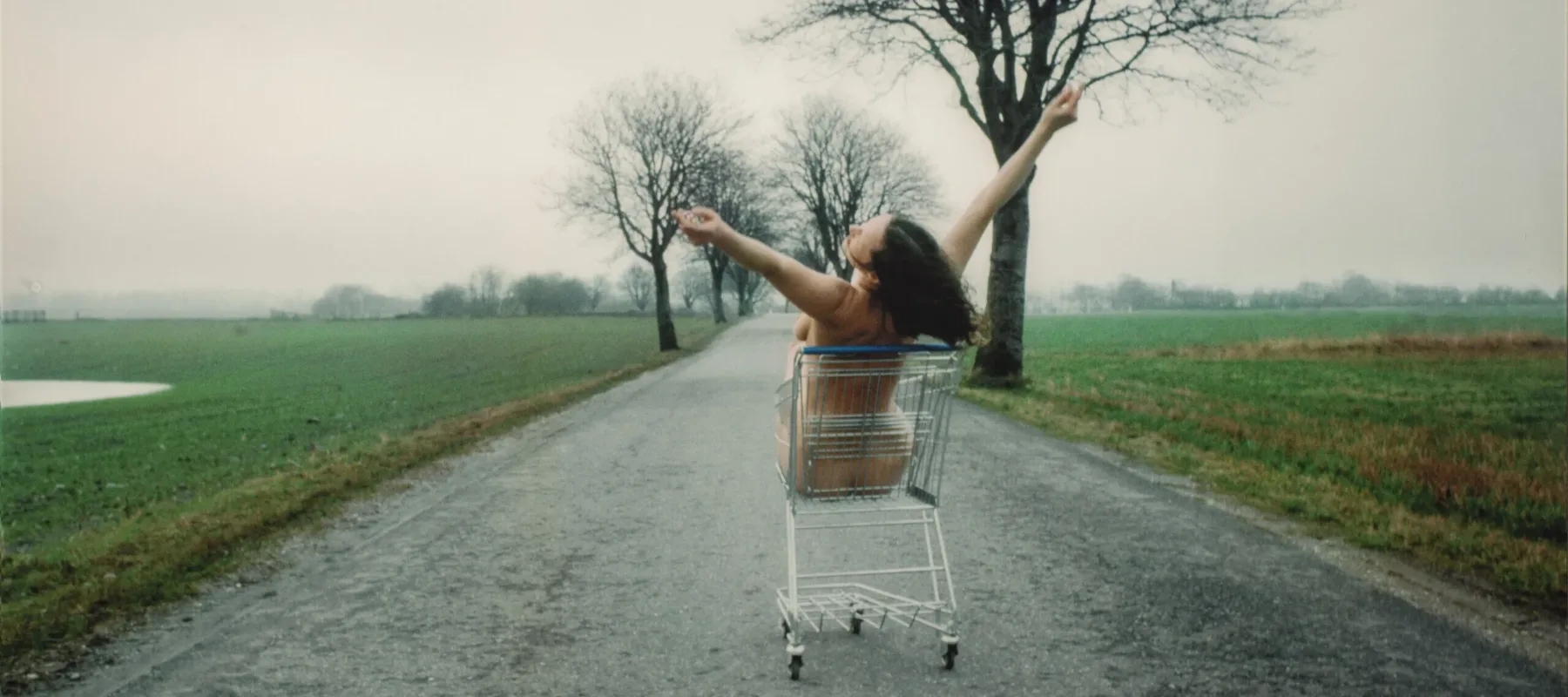Self-portraiture offers a fascinating glimpse into an artist’s mind. Whether traditional or abstract, self-portraits can affirm an artist’s identity. There are fewer known self-portraits by early women artists, who faced societal challenges in pursuing their goals and publicizing their accomplishments. Modern and contemporary women artists with works on view at NMWA employ self-portraiture to address personal, social, and political issues.

Known for her dizzying collages juxtaposing disparate characters and props to hint at alternate stories, Jane Hammond (b. 1950) draws source material from found clippings, images, and phrases. Hammond’s monumental work Wonderful You (1995), the first in a series, brings together recognizable figures including Superman, Mickey Mouse, and Buddha, replacing them all with her own face. Illustrating each character with jarring colors, the work highlights—rather than obliterates—their individuality. Rather than express herself in traditional terms, she chose to portray imaginary extensions of the self, celebrating a fantastical alternative to the isolation of the individual. She asserts the dignity of connections over distinction, eroding what may seem like deep-set cultural or historical differences to embrace the beauty of the other—or, in her words, “you.”

Kirsten Justesen (b. 1943) champions the dignity of independence. Using her body as her medium, Justesen’s work examines how the female self relates to society. She portrays herself seated in a shopping cart, nude, and cruising down a tree-lined outdoor path in the photograph Lunch for a Landscape (1975; printed 2009). With her arms outstretched, Justesen rides in what she calls “the vehicle of [a housewife’s] life.” She embraces her roles as an artist and mother. Despite identifying as a housewife, she portrayed herself free from the house, her husband, or her children, asserting that her individuality as internal. Her pose is one of exhilaration and freedom. Justesen seems to reject the docility of historical female nudes, declaring independence from the male gaze in expressing her own desires.

Best known for her myriad self-portraits, Frida Kahlo (1907–1954) often used her own image in her artistic practice. In her Self-Portrait Dedicated to Leon Trotsky (1937), she paints herself standing center stage, meeting the viewer’s gaze with confidence, and dressed in bright, elegant attire. In one hand she holds a bouquet, while in the other she displays a letter dedicated to Russian revolutionary Leon Trotsky. Framing herself between curtains that call to mind religious Mexican folk paintings of the time, Kahlo takes control of her staged reality, casting herself as a protagonist in a dramatic declaration of political allegiance. Her address to Trotsky functions not only as a message of political support, but also an act of self-assertion to a lover. Although the setting in Kahlo’s painting is fictional, it serves as a symbolic space for self-staged expression.
These women demonstrate that self-portraits can be complex reflections of the artist’s private fascinations or public life. Visit NMWA to see these works in the museum’s collection galleries.

